
http://www.iaeme.com/IJMET/index.asp 89 editor@iaeme.com
International Journal of Mechanical Engineering and Technology (IJMET)
Volume 10, Issue 03, March 2019, pp. 89-101. Article ID: IJMET_10_03_009
Available online at http://www.iaeme.com/ijmet/issues.asp?JType=IJMET&VType=10&IType=3
ISSN Print: 0976-6340 and ISSN Online: 0976-6359
© IAEME Publication Scopus Indexed
NUMERICAL SIMULATION AND
EXPERIMENTAL STUDIES ON RESIDENTIAL
HOME USING EVAPORATIVE COOLING AND
VERTICAL VENTILATION
*Sarjito and Risky Yogananda
Department of Mechanical Engineering, Universitas Muhammadiyah Surakarta,
Kartasura 57102, Indonesia.
Qomarun
Department of Architectural Engineering, Universitas Muhammadiyah Surakarta,
Kartasura 57102, Indonesia.
Yufeng Yao
Department of Engineering Design and Mathematics, University of the West of England,
Bristol BS16 1QY, United Kingdom.
Denis Marchant
Faculty of Science Engineering and Computing, Kingston University, Friars Avenue
Roehampton Vale London SW15 3DW, UK
*Corresponding author
ABSTRACT
The limitation of land in urban area leads to the existence of land slowly omitted
and changed to be functioned room. The additional room itself will be reducing
thermal comfort in the house. To maintain thermal comfort, some alternative solutions
are directed in conjunction with modern technologies, for instance using air
conditioning system. However, the solution proved that it can produce more energy
extravagance, and stimulate global warming (Givoni, 1998). Therefore, alternative
natural cooling system with less energy consumption for getting comfortable level in
residential house and similar building is required. The work described here is a
computational fluids dynamics (CFD)study aimed at validating the numerical method
with experimental data available from a house incorporated with vertical ventilation
system which existed at Surakarta Indonesia (Azizah R. and Qomarun, 2014). A
detailed computational model of the house device has been established. Initial CFD
work has focused on establishing the relationship between ambient wind speed and
relative humidity and temperature, and later comparing the results with the existing

Numerical Simulation and Experimental Studies on Residential Home Using Evaporative Cooling
and Vertical Ventilation
http://www.iaeme.com/IJMET/index.asp 90 editor@iaeme.com
experimental data. Main outcomes are conformable level and promising of using
natural cooling system. Detailed flow field are visualized that were not seen from the
experiments. Further simulation work to model the house performance with water
spray evaporation is addressed in brief and the results are plotted into comfortable
zone using psycrometric chart.
Keywords: Comfort zone, evaporative cooling, CFD
Cite this Article: Sarjito and Risky Yogananda, Qomarun, Yufeng Yao and Denis
Marchant, Numerical Simulation and Experimental Studies on Residential Home
Using Evaporative Cooling and Vertical Ventilation, International Journal of
Mechanical Engineering and Technology, 10(3), 2019, pp. 89-101.
http://www.iaeme.com/IJMET/issues.asp?JType=IJMET&VType=10&IType=3
1. INTRODUCTION
The residential house commonly has an additional land both in the front and behind to fulfill
the requirements of occupant’s thermal comfort. The existence of extra land also gives space
for air change rate, so that the perfect air circulation in housing can be improved. However,
due to limitation of land in urban area, the existence of land slowly is missing out and
changed to be functioned room. The additional room itself will be reducing thermal
comfortable level in the house.
The natural thermal comfort can be gained by the one of alternative systems so called
evaporative cooling, by producing evaporation effect in the room. Cooling with evaporation
technique can work effectively while combining with better air circulation. Ventilation
systems or louvers in the house are one of feasible ways to gain fresh air and also for escaping
humid air from the interior, resulting in better air circulation accordingly. The evaporation
effect is basically changed of substance phase using latent heat calorie in place, where latent
heat is the energy absorbed by or released from a substance during a phase change from a gas
to a liquid or a solid and vice versa. The evaporation process gave temperature and relative
humidity in the space effectively. The evaporative cooling and vertical ventilation design used
in the natural cooling can influence the thermal comfort produced. Therefore, further
researches are required to study alternative natural and passive cooling.
The experimental study to investigate thermal comfort characteristics resulted by a
ventilation design and evaporation method would be very costly. Beside of designing process,
it also needs the procurement of measurement apparatus as many as positions that will be
measured in getting air characteristic uniformly positions. Since, air properties may be
changed from time to time depending on local weather conditions.
Research development using software and computational based method is promising and
it can help researchers in simulating of actual phenomenon process. One of methods used is
so-called Computational Fluid Dynamic (CFD). ANSYS is one commercial software used for
completing CFD analyses in this study. The software can deal with multi-physics problems,
including mechanical, heat transfer and fluid as well as the case related with acoustics and
electromagnetics, etc. In this work, the case study will be analyzed and simulated using Ansys
CFX-15, focusing on evaporative cooling effect in residential home incorporated with vertical
ventilation. Numerical data collected then are compared with the experimental data studied
simultaneously.

Sarjito and Risky Yogananda, Qomarun, Yufeng Yao and Denis Marchant
http://www.iaeme.com/IJMET/index.asp 91 editor@iaeme.com
2. LITERATURE AND THEORETICAL REVIEW
2.1. Literature Review
(Azizah R. and Qomarun, 2014) investigated alternative vertical ventilation in supporting
thermal comfort of residential home at urban area. Their research was conducted
experimentally. In design, step of building was conducting with separated floors on base and
completed with porous in wet area. Whereas, vertical ventilation was designed by omitting
back walls, giving a gap of 30 cm from the wall of the neighboring house. Thermal
investigation was done by measuring temperature, relative humidity (RH) and air velocity at
28 measurement points, along the avenue in the front, at interior and exterior of the house,
respectively. The results of thermal investigation showed that vertical ventilation and water
evaporation on the floor was able to reduce temperature by 2oC compared with ambient
temperature and also in case of air change rate encountered by 0.1 m/s on average. (Masak et
al., 2000) described and simulated using a CFD model for a passive evaporative cooling in a
hypothetical building designed by Ford & Associates at central of Seville Spanyol using
CFX-4.2. CFD simulation was done to investigate air flow, temperature and RH resulted in
the building with passive evaporative cooling system that operated at no wind condition and
with air flow velocity of 4 m/s from south and north direction, with temperature of 35oC and
RH of 34% used in Sevilla. Simulation results at no wind condition obtained with ambient
temperature of 29oC for lower room and for higher room it tends to have increased
temperature. The simulation with air velocity, downward flow at atrium room showed to be
unbalanced due to air velocity above the inlet, then temperature and RH were also to be
unbalanced. (Sarjito and Riyadi T.W.B., 2013, 2014) numerically studied the evaporative
cooling effect with multi-stage downdraught evaporative cooling. CFD simulation was carried
out to reveal the evaluation of cooling performance of multi-stage by incorporating water
spray and applying the best wind catcher investigated previously. Simulation was conducted
by integrating evaporative cooling apparatus in a hypothetical building of two floors by
deemed hot and dry weather. In that research, operation by varying wind speed to investigate
of cooling effect was also carried out. Typically, simulation result showed that the more air
velocity given the more temperature reduced, and the RH increased on the floor accordingly.
Literature review below is not only on theoretical but also of some empirical studies.
2.2. Theoretical Review
2.2.1. Air conditioning system
The air conditioning system is a cooling process or heating air so that temperature and relative
humidity suitable with requirement for comfortable of occupants living in space. (Frick, 2007)
defined thermal comfortable considering three important aspects, namely air temperature, RH
and air change rate. Thermal comfort for static air can be divided into three categories: (1)
nice cool, with effective temperature of 20.5oC-22.8oC (2) optimal nice with effective
temperature of 22.8oC-25.8oC and (3) nice warm with effective temperature of 25.8oC-27.1oC.
Thus, nice area for human physically in static air could be achieved at the room condition
with temperature of 21oC-27oC and RH of 20%-70%, respectively. Furthermore, thermal
comfortable for moving air flow in maximum speed of 0.1m/s, comfort area is achieved in the
range of temperature 25oC-35oC and RH of 5%-85%.
2.2.2. Evaporative cooling

Numerical Simulation and Experimental Studies on Residential Home Using Evaporative Cooling
and Vertical Ventilation
http://www.iaeme.com/IJMET/index.asp 92 editor@iaeme.com
The evaporative cooling is occurred due to water evaporation on free surface with the
auxiliary air flow (Stoeker, 1982). Evaporative cooling also happens when steam of water
added to the air having RH less than 100%. The application of evaporative cooling can be
divided into five categories (Bowman, 2000) as:
1. Indirect passive evaporative cooling
The indirect passive evaporative cooling includes a conduction heat transfer prices
from solids to liquids, where cooling process coming from evaporation source of
water to the air. For instant, pond, spray water, moving water at the roof of
residential house.
2. Indirect active evaporative cooling
In this process, ambient air is flowing through a cooling stack, and evaporative
cooling is occurred due to the contact of ambient air and wetted heat transfer
apparatus. Heat transfer is occurred in convective mean, and there is no increase in
RH at cooled rooms.
2.2.3. Direct evaporative cooling
The direct evaporative cooling includes water evaporation dropped at air flow. For examples,
transpiration process of tree that is placed in humid area, fountain, spray and pond and cooling
chimney.
2.2.4. Direct active evaporative cooling
This is principally the same as indirect active evaporative cooling, and the only differences
are it is cooling the air (because its contact with wet pad) then forwarded to space is being
cooled.
2.2.5. Two steps evaporative cooling
The two-step evaporative cooling is a combination between the direct active evaporative
cooling with the indirect evaporative cooling, and it is commonly used in lower dry wet bulb
temperature.
2.2.6. Psychrometric chart
Psychrometric is the study of properties air and steam of water mixing, and having important
meaning in air conditioning technique, as atmospheric air not totally dry. Evaporative cooling
process can be seen in figure.1 (i.e. phase 0 to 1), it includes cooling with latent heat from air
due to water evaporation.

Sarjito and Risky Yogananda, Qomarun, Yufeng Yao and Denis Marchant
http://www.iaeme.com/IJMET/index.asp 93 editor@iaeme.com
Figure 1. Evaporative cooling process.
The ideal evaporative cooling is an adiabatic process, where enthalpy at the final process
is the same as enthalpy at initial process (h0=h1). There is no benefit or drawback in the
system, total latent heat of cooling is balanced with total thermal energy absorbed by water
evaporation. If thermal energy added into the system then enthalpy at the end state will be
increased.
2.2.7. Relative humidity (RH)
The relative humidity is a ratio between partial pressure of water steam in mixing to pressure
of saturated water vapor in certain temperature. Relative humidity is expressed using the
following equation:
)1......(%.........100
)(
)(
2
'
2 OHP
OHP
where:
= Relative Humidity (%)
P (H2O) = Partial pressure of water steam in mixing
P’ (H2O) = Saturated pressure of water at certain temperature
2.2.8. Dry bulb temperature (DBT)
The dry bulb temperature is room air temperature found from measurement using link
Psychrometer on dry bulb temperature. The dry bulb temperature is plotted in vertical line
started from horizontal axis in lower position of Psychrometric chart. The changing in dry
bulb temperature indicates of changing in sensible heat.
2.2.9. Wind Shear Effect(WSE)
The wind speed just at ground level having lower speed compared with higher air layer.
Surface effect is often knew with wind shear effect which is condition of boundary layer in
no-slip adiabatic applied at entire surface and incoming air velocity changed with shear effect
of air with cross sectional area V(y)that determined use the following expression (Smith et al.
2002)
)2........(
)(
refref
y
H
y
V
V
In this equation, V(y)is representing of incoming air velocity (m/s) at height of y(m), Vref, is
reference air velocity at height reference height of Href, and power of α is value of surface
roughness on the appropriate area.
3. METHODOLOGY
3.1. Experimental Setup
Experiment setup was done in a previous study of (Azizah R. and Qomarun, 2014) throughout
three steps as: (1) designing step; (2) construction step; and (3) testing step. The model house
is illustrated in figure 2.








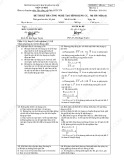
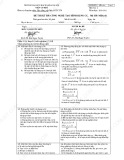
![Đề thi Công nghệ tạo hình dụng cụ năm 2020-2021 - Đại học Bách Khoa Hà Nội (Đề 4) [Kèm đáp án]](https://cdn.tailieu.vn/images/document/thumbnail/2023/20230130/phuong62310/135x160/3451675040869.jpg)


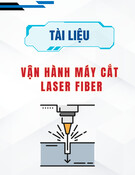



![Bài tập môn Cơ sở thiết kế máy [năm] [mới nhất]](https://cdn.tailieu.vn/images/document/thumbnail/2025/20251008/ltgaming1192005@gmail.com/135x160/26601759980842.jpg)
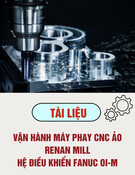
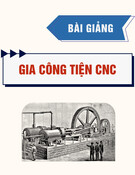
![Tài liệu huấn luyện An toàn lao động ngành Hàn điện, Hàn hơi [chuẩn nhất]](https://cdn.tailieu.vn/images/document/thumbnail/2025/20250925/kimphuong1001/135x160/93631758785751.jpg)


![Câu hỏi trắc nghiệm Công nghệ chế tạo máy [mới nhất]](https://cdn.tailieu.vn/images/document/thumbnail/2025/20250924/kimphuong1001/135x160/19451758683747.jpg)


